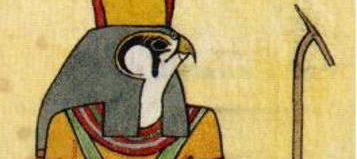Primary Sources:
Iamblichus: On the Mysteries – Undoubtedly the single most important text for the reconstruction of Neoplatonic theurgy, Iamblichus’s De Mysteriis has been recently translated by three experts in the field, far surpassing the previous English translations of Thomas Taylor (1821) and Alexander Wilder (1911). This edition (2003) features the Greek text on facing pages and helpful explanatory footnotes. You can also read an introduction to the De Mysteriis of Iamblichus on this website.
Proclus: The Elements of Theology – The fifth-century CE head of the reconstituted Platonic Academy in Athens, Proclus is the second-most important theurgic Neoplatonist. Proclus’ surviving works are quite voluminous; probably the best place to start is his systematic Elements of Theology, translated by E. R. Dodds, which includes the full Greek text on facing pages, a comprehensive introduction and commentary, and an important historical essay on the doctrine of the astral body in Neoplatonism. The enthusiastic student of Proclus might next move to his Commentary on Plato’s Timaeus, recently published in a superb new six-volume translation: vol. 1, vol. 2, vol. 3, vol. 4, vol. 5, vol. 6.
The Chaldean Oracles – The Chaldean Oracles are a collection of fragments of hexameter verse written in the late second century CE, which formed an important sacred text for the theurgic Neoplatonists (Iamblichus, Proclus, etc.). This edition (1989) is translated by Ruth Majercik, with Greek on facing pages, an excellent 46-page introduction, and nearly 100 pages of explanatory notes.
Hermetica: The Greek Corpus Hermeticum and the Latin Asclepius – Brian Copenhaver’s excellent translation of these important works from Hellenistic Egypt includes all eighteen treatises from the Corpus Hermeticum, the Latin Asclepius, a 48-page historical introduction, and more than 165 pages of end-notes. The notes alone are worth the price for the serious student of the Hermetic tradition.
The Greek Magical Papyri in Translation – Scholars are beginning to recognize that some of the so-called “magical” rituals of the PGM are in fact precisely the type of theurgic rituals that Iamblichus and Proclus describe in their own works. For example, Edmonds’ 2019 book on ancient magic (see below), Drawing Down the Moon (pp. 350-371) interprets PGM 1.42-195 (“Spell of Pnouthis”), PGM 4.475-829 (“Mithras Liturgy”), and PGM 13 (“Eighth Book of Moses”) as varieties of theurgic ritual. The Greek Magical Papyri in Translation remains the best comprehensive English translation of this collection of ancient Greek (and Coptic) ritual texts.
Plotinus: The Enneads – A new translation of the complete Enneads of Plotinus, including Porphyry’s Life of Plotinus, by leading scholars in the field of Neoplatonic studies, with a recently released paperback edition for the student budget.
Secondary Sources:
Drawing Down the Moon: Magic in the Ancient Greco-Roman World – Radcliffe G. Edmonds III’s newest book deserves the highest praise. In addition to providing a comprehensive synthesis of ancient evidence and modern theory concerning Greco-Roman magical ritual, Edmonds includes excellent chapters on divination (chapter 7) ancient astrology (chapter 8), alchemy (chapter 9), and theurgy (chapter 10). His accessible prose is complemented by rigorous footnotes that point the reader to the best supplementary sources on any given topic he touches on. I will be using this as a textbook in my own college classes on ancient magic. Highly recommended!
Theurgy and the Soul: The Neoplatonism of Iamblichus – Gregory Shaw’s book on Iamblichus remains one of the most accessible scholarly introductions to the theurgy of Iamblichus.
Philosophy and Theurgy in Late Antiquity – The late Algis Uzdavinys reads theurgic Neoplatonism with an audacity matched by few other recent scholars, incorporating a diverse set of comparanda ranging from ancient Egypt to Sufism and Hindu Tantra. Also recommended is his Philosophy as a Rite of Rebirth: From Ancient Egypt to Neoplatonism. Expect to spend many productive weeks following up on the connections made in these books.
More coming soon…
